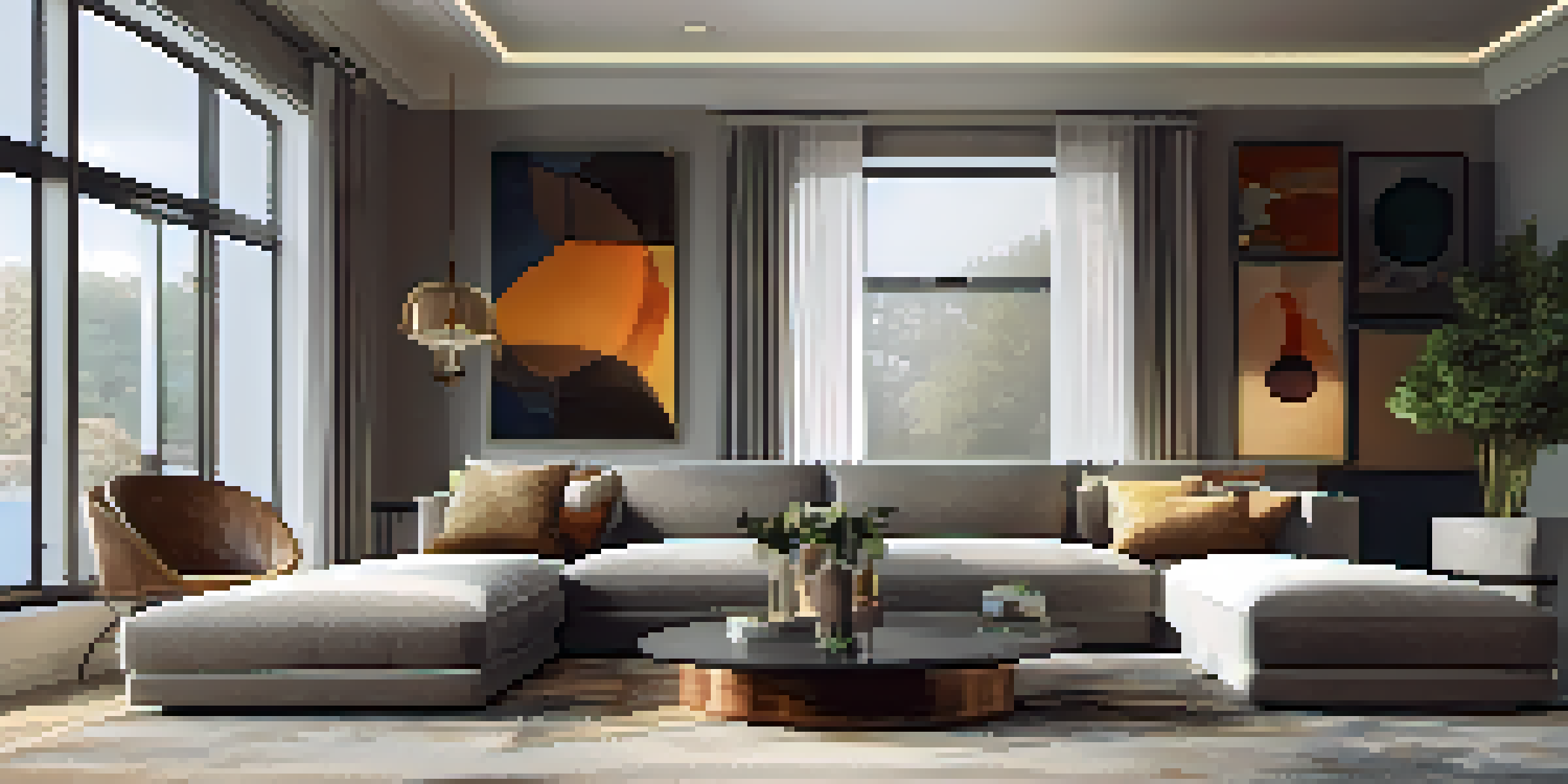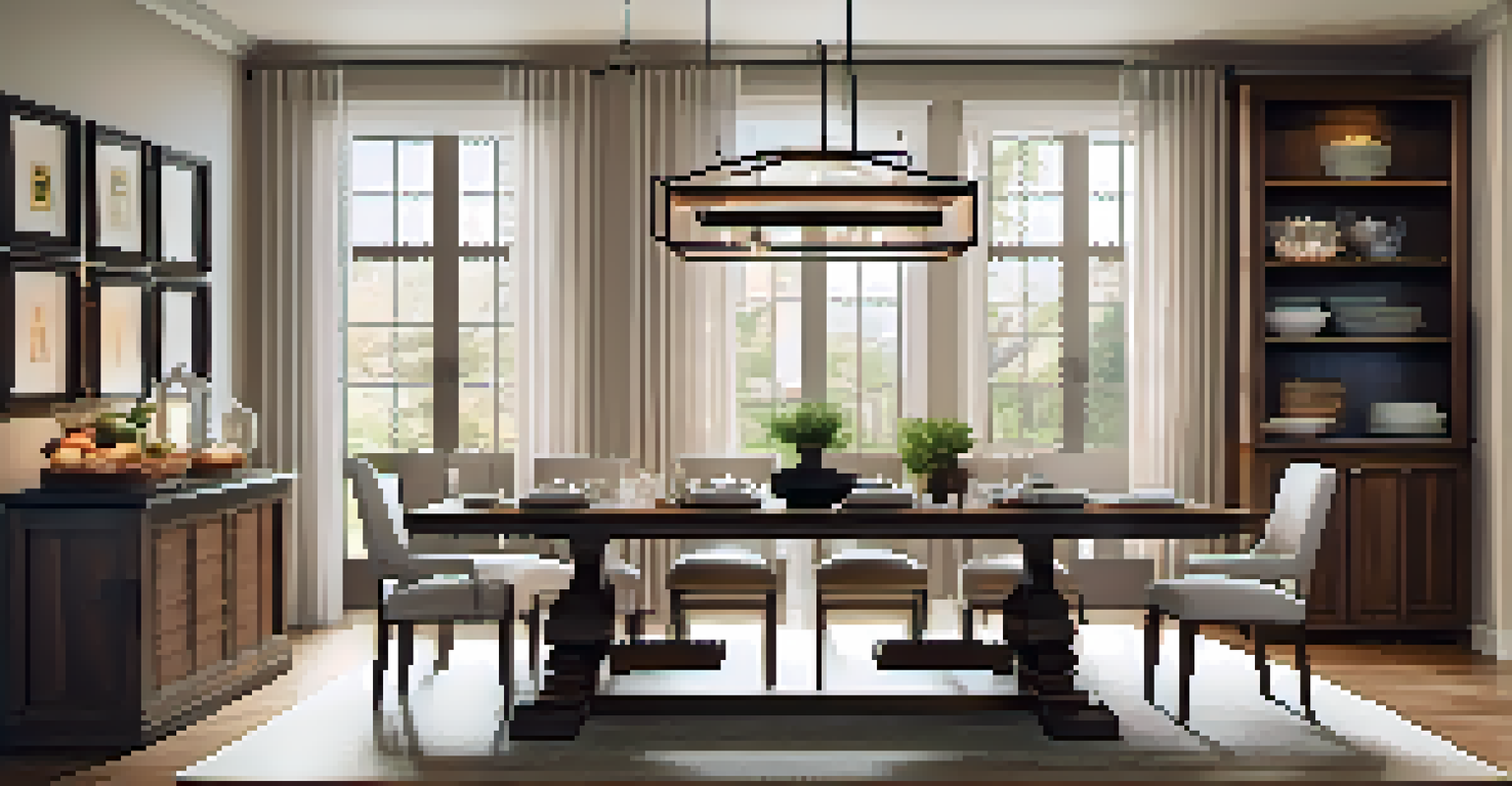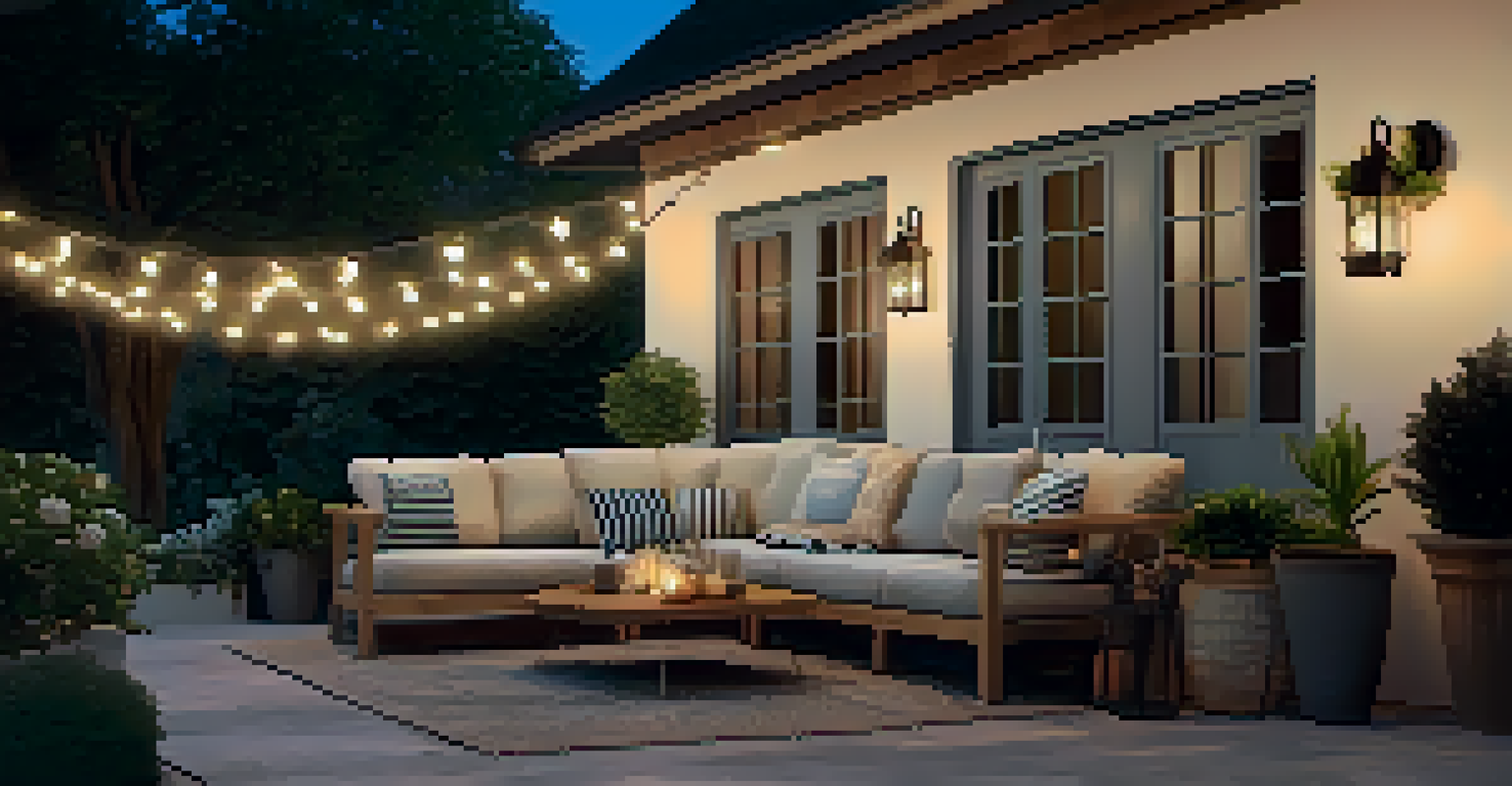How to Use Lighting to Highlight Your Home's Architecture

Understanding the Role of Lighting in Architecture
Lighting is more than just a practical necessity; it plays a vital role in showcasing your home's architecture. By strategically placing lights, you can emphasize unique features and create a captivating atmosphere. Think of lighting as the brush strokes of a painting, highlighting angles, textures, and materials that might otherwise go unnoticed.
Be the light in someone's life, and you will illuminate your own.
Different types of lighting serve various purposes. Ambient lighting provides overall illumination, while accent lighting draws attention to specific features, such as a beautiful archway or finely detailed moldings. Task lighting, on the other hand, is designed for functionality, illuminating areas for activities without overshadowing your home's aesthetic charm.
When considering how to use lighting effectively, it's essential to understand the interplay between light and shadow. The right balance can bring depth to your spaces, making them feel more dynamic and inviting. So, let's dive into some practical tips on how to achieve this balance in your own home.
Choosing the Right Types of Lighting Fixtures
Selecting the perfect lighting fixtures can significantly impact how your home's architecture is perceived. Wall sconces, pendant lights, and recessed lighting each have their unique qualities and can enhance different architectural elements. For instance, wall sconces can accentuate a hallway's texture, while pendant lights can draw the eye to a stunning ceiling design.

Consider the scale and style of your fixtures. Oversized fixtures can make a bold statement, while smaller ones can offer subtlety and grace. Choosing fixtures that complement your home's architectural style—be it modern, traditional, or eclectic—ensures a cohesive look that feels intentional.
Lighting Enhances Architecture
Strategic lighting can showcase your home's unique architectural features and create an inviting atmosphere.
Don't forget about the finish of your fixtures as well. Metallic finishes can add a touch of glamour, while matte options may lend a more rustic or understated vibe. Ultimately, your choice should reflect your personal style while enhancing the architectural features of your home.
Using Natural Light to Your Advantage
Natural light is a powerful ally in highlighting your home's architecture. Large windows and skylights can flood spaces with sunlight, creating a warm and inviting atmosphere. Positioning mirrors strategically can also help reflect that natural light, further amplifying its effect and making rooms feel more spacious.
Lighting is the magic wand that transforms a home into a haven.
Think about how the orientation of your home affects natural light throughout the day. South-facing windows typically receive the most sunlight, making them ideal for showcasing key architectural features. Consider using sheer curtains to soften the light without blocking it completely, allowing the beauty of your space to shine through.
During the evening, the transition from natural to artificial light can create a cozy ambiance. Layering both types can help maintain a balanced atmosphere, ensuring that the architectural elements are highlighted beautifully, no matter the time of day.
Highlighting Architectural Features with Accent Lighting
Accent lighting is your secret weapon when it comes to showcasing specific architectural features. This type of lighting is designed to focus attention on particular elements, such as a stunning fireplace, an intricate column, or a piece of artwork. By using spotlights or directional fixtures, you can create dramatic effects that bring those features to life.
To effectively use accent lighting, consider the placement and angle of your lights. Lighting from below can create a sense of grandeur, while lighting from above can cast gentle shadows that highlight textures. Experimenting with these angles can lead to stunning results that transform your space.
Layering Lighting for Impact
Combining ambient, task, and accent lighting effectively creates a well-rounded and visually appealing environment.
It's also essential to keep in mind the intensity of the accent lighting. Too much brightness can detract from the beauty of the feature, while too little may not make an impact. Finding the right balance will ensure that your architectural highlights are both captivating and harmonious with the rest of your decor.
Creating a Layered Lighting Scheme
A layered lighting scheme combines ambient, task, and accent lighting to create a well-rounded atmosphere in your home. By effectively layering these types, you can enhance the architectural features without overpowering them. This approach allows for flexibility, enabling you to adjust the mood based on the time of day or occasion.
Start by establishing a base layer with ambient lighting, which provides overall illumination. Next, incorporate task lighting in areas where activities take place, such as reading nooks or kitchens. Finally, add accent lighting to highlight the architectural details that define your home’s character.
This harmonious blend not only makes your space functional but also visually appealing. As you experiment with different layers, you'll find the right combination that reflects your personal style and showcases your home's unique architecture.
Incorporating Smart Lighting Solutions
Smart lighting solutions offer a modern twist on traditional lighting, allowing for greater control and customization. With smart bulbs and app-controlled systems, you can adjust brightness, color temperature, and even set schedules to highlight your home's architecture at various times. Imagine being able to create a warm glow in the evening that accentuates your favorite features with just a tap on your phone!
These solutions also foster energy efficiency, as you can automate lighting to turn off when not in use. This not only saves energy but also prolongs the lifespan of your fixtures. Plus, many smart lighting systems allow for voice control, making it easier than ever to adjust your home's ambiance.
Smart Solutions for Control
Integrating smart lighting allows for customizable control over brightness and ambiance, enhancing your home's beauty with convenience.
When integrating smart lighting into your design, be sure to consider how these systems can complement your architectural features. Pairing smart accent lights with your existing fixtures can create a dynamic lighting scheme that enhances your home's beauty while offering convenience.
Experimenting with Color Temperature and Lighting Effects
The color temperature of your lighting can dramatically affect the perception of your home's architecture. Warm light (around 2700K) creates a cozy and inviting atmosphere, perfect for living spaces. On the other hand, cooler light (5000K and above) evokes a more modern feel, highlighting clean lines and contemporary designs.
By experimenting with different color temperatures, you can find the perfect balance that showcases your architectural style. For instance, using warm light in a rustic home can enhance its charm, while cooler tones in a minimalist space emphasize its sleekness and simplicity.

You can also play with lighting effects, such as shadows and highlights, to add depth to your spaces. Using dimmers allows you to adjust the intensity, creating dramatic contrasts that bring architectural details to life. The right combination can transform your home into a stunning visual narrative.
Final Thoughts: The Art of Lighting Your Home
Lighting is an art form that can dramatically enhance your home's architectural beauty. By understanding the different types of lighting and how they interact with your space, you can create a captivating environment that reflects your personal style. Remember, it's all about balance—layering, experimenting, and finding what works best for your unique home.
As you embark on this lighting journey, don't hesitate to seek inspiration from various sources, whether it's design magazines, online platforms, or even your favorite restaurants. Observing how light transforms spaces can spark ideas for your own home.
Ultimately, the goal is to create a warm, inviting atmosphere that highlights the architectural features you love. With thoughtful planning and a bit of creativity, you'll be able to illuminate your home beautifully, making it a true reflection of your taste and lifestyle.